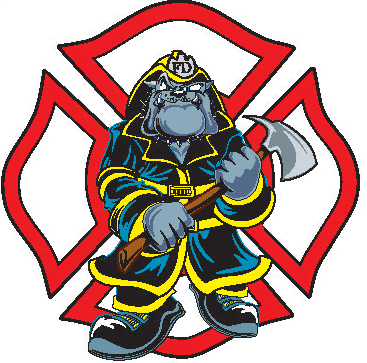消防員故事 / Fireman story

殉職消防隊目蕭永方

殉職消防員陳兆龍
中國香港旺角嘉禾大廈在2008年8月10日發生五級火警,燃燒六個小時後,在下午3時15分救熄。
火警發生在上午9時20分,旺角彌敦道嘉禾大廈閣樓的一間夜總會起火,消防員在火警發生後8分鐘到場。
現場冒出大量濃煙,記者原本在大廈對面的採訪,要後退到離火場幾幢遠的位置,一段彌敦道和附近街道被濃煙濃罩,警方一度建議附近大廈居民離開。
市民陳先生表示,他在大廈內發現閣樓起火後,曾經使用三個滅火筒滅火,但是火勢未能控制,他就帶走2名老人逃生。
火警中有4人死亡,包括二名消防員,46歲消防隊目蕭永方、25歲消防員陳兆龍、77歲市民和大廈閣樓的燒焦屍體。55名受傷的市民,分別送往伊利沙伯醫院、廣華醫院、瑪嘉烈醫院及明愛醫院救治。33人經過治療後已經出院,22人需要留院的傷者中,有4人情況嚴重。
消防處派出了超過200人,動用了五條消防喉及十隊煙帽隊拯救。
消防處長盧振雄表示,兩名死亡的消防員是有足夠的保護設備,死因需要進一步調查。
消防處表示,消防員到場時,濃凐不能夠排出大廈,令整座大廈內充滿濃煙和大火,令到大廈內的住客不能逃生,增加救援難道。消防處需要不斷增派多隊煙帽隊和消防鋼梯車拯救,有部分市民經由附近大廈救出,消防員總共救出約90人。
並發現起火大廈閣樓和三樓並沒有防煙門,可能有經過改裝。初步認為火警沒有可疑,消防處會成立特別小組調查火警的起因和大廈的消防設備有沒有問題。
有消防專家表示,消防員從外射入大廈的高壓水槍,會令濃煙由大廈排出變為吸回大廈,加上火場沒有防煙門阻隔,令濃凐和火充斥大廈內,造成煙囪效應,在最頂的幾層會充滿濃凐和火。香港的嘉利大廈大火就是因煙囪效應造成嚴重傷亡。
為了方便救援,警方全線封閉一段彌敦道和港鐵旺角站的部分出口,令九龍區交通受阻,部分經過彌敦道的過海巴士一度把巴士總站改在紅磡海底隧道出口。彌敦道已經在晚上全面重開,火場所在的大廈還被封閉調查。
************************@@@@@@@@@@@@@@@@@@*************************
Fire fighters on Sunday night found a charred body at mezzanine floor of a building in Mong Kok, a downtown area of Kowloon in Hong Kong, raising the death toll of the fatal fire to four.
Police were still investigating the identity of the latest body found.
Earlier, two fire fighters and one woman were killed in the fire which raged in the 15-storey Cornwall Court, Nathan Road, for about six hours before it was extinguished.
Two fire fighters, 46-year-old senior fireman Siu Wing-fong and 25-year-old Chan Siu-lung, died on duty when they were searching from the ground floor to the top of the building.
The two unconscious fire fighters were found by other fire services staff climbing from a nearby building and separately sent to Queen Elizabeth Hospital and Kwong Wah Hospital, where they were later confirmed dead at around 14:04 local time (0404 GMT).
Doctors said they have inhaled too much toxic smoke.
According to the Fire Services Department, the 46-year-old Siu had 24 years of experience in fire services department while Chan joined the department a year ago.
Another woman, aged 77, was sent to Princess Margaret Hospital where she failed all emergency treatment.
Fire fighters battled for about six hours before putting out the fire at 15:13 p.m. local time (0713 GMT).
Forty of about 60 rescued residents were admitted into hospital. A 26-year-old man was in critical condition, three others were serious while the remaining 36 persons were in stable condition.
Another 15 residents were discharged from hospital shortly after receiving medical examination and treatment.
Henry Tang, Chief Secretary for Administration of Hong Kong Special Administrative Region (HKSAR) government, condoled on the losses of lives during his visit to families of the two fire fighters.
"I am deeply sorry for the losses of lives in the accident," Tang told reporters, adding "I want to thank the two fire fighters for what they had done for the society."
Tang pledged to render necessary assistance to the families of the two fire fighters and vowed to thoroughly investigate the cause of the fire.
The Fire Services Department has set up a special team to investigate the cause of the fatal fire.
Ambrose Lee Siu-kwong, Secretary for Security of HKSAR government, on behalf of Chief Executive Donald Tsang, expressed his deep condolence to the families of the fire fighters and the resident after visiting the fire scene.
"We're saddened by the passing away of our brave colleagues," Lee said, adding "we all share the grief with their families."
Lo Chun-hung, Director for Fire Services Department, inspected the building when it was still ablaze and lamented on the losses of two fire fighters.
Lo said the two fire fighters were equipped with fire uniforms and helmets before they went into the building to search for stranded residents.
He said the intensive heat and heavy smoke inside the building had made fire fighters' rescue efforts very difficult.
Apart from the two deaths, three other firemen were also injured when fighting the fire.
The fire started from a Karaoke ballroom on the second floor at about 9:20 a.m. local time (0120 GMT) and engulfed the entire building in a very short period of time, according to the preliminary investigation by fire fighters.
Heavy smoke billowing out of the building once darkened the skies nearby and pedestrians could see and smell the fire from blocks away.
A witness said he once tried to stamp out the fire with three extinguishers when the fire broke out but failed. Then he called the fire service department.
"Smoke is everywhere and it was as dark as night," he said.
Upon the report of the fire, the Fire Services Department mobilized more than 200 fire fighters and 40 fire engines to the scene, trying to bring the fire under control and evacuate residents, many of whom were still sleeping when the fire broke out.
Dozens of residents living near the building were forced to evacuate due to the pervading smoke while several exits of the mass transit railway (MTR) at Mong Kok were forced to close down due to the fire.
On May 22, 2007, a 27-year-old fireman died on duty in Hong Kong when fighting a midnight fire at an industrial building in Tsuen Wan.
( Selected News on CRIENGLISH.com )
相關新聞YOUTUBE短片:
相關新聞連接 / Related News Links:
明報即時新聞
維基新聞
網易新聞中心
CRIENGLISH.com
Shanghai Daily
Labels: Dangerous Fire, Fire Fighter, Fireman killed, Hong Kong, 嘉禾大廈, 彌敦道, 旺角大火, 殉職, 消防員, 蕭永方, 陳兆龍, 香港


